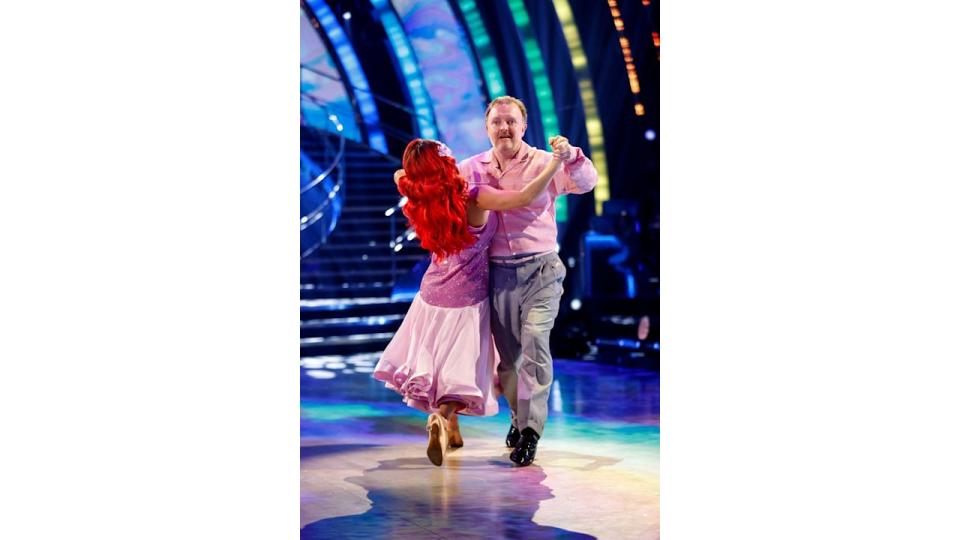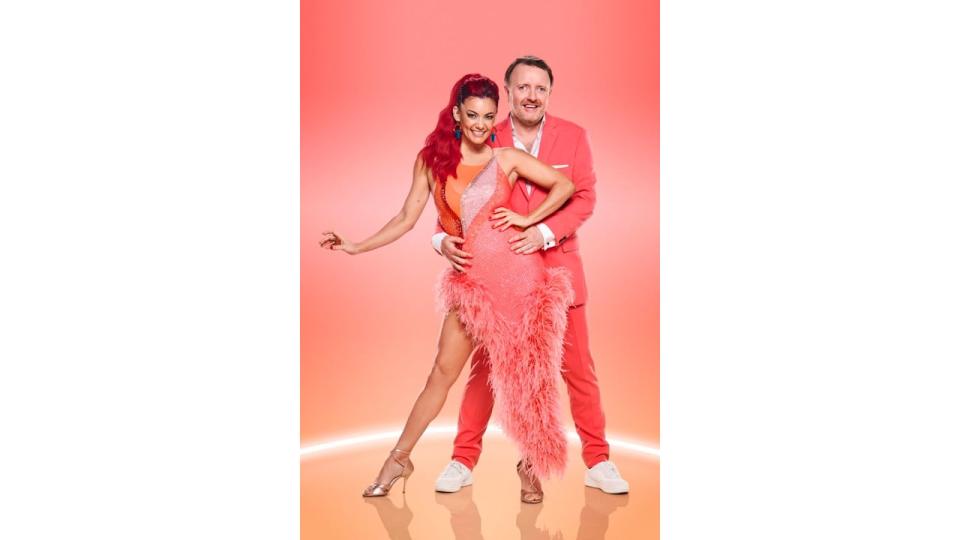How Dianne Buswell is teaching Strictly's first blind star Chris McCausland to dance: inside their training

Strictly Come Dancing has welcomed it's first ever blind contestant, Chris McCausland. The comedian has brought the house down week after week with his incredible routines - despite having no dance experience before the show and having a hereditary condition called retinitis pigmentosa, which caused him to lose his sight aged 22.
His success in the competition has been a huge inspiration - and we looked into how his dancing pro partner, Dianne Buswell, teaches him the routines without being able to show him visually. Find out more…
The challenges
Speaking about his dance experience, Chris confirmed that he has never danced before. He said: "My previous experience is nothing. Danced a bit at some weddings maybe, had a go! If there was no dancing on this show, I'd be fine!"

His partner Dianne Buswell opened up about the challenge of teaching Chris without being able to show him the moves, telling him: "We can make you a dancer. I'm not saying it's going to be easy, because it's not, but together we can definitely do this."
How does Dianne teach Chris?
During the VT section of Strictly, Dianne has opened up about how she is able to demonstrate the moves to Chris using touch.
She explained: "I can't show him what something needs to look like, but I've found that Chris places his hand on my body and feels how my arms are or feels what my legs are doing and then he instantly gets a sense of what he should be doing."
You may also like
Strictly star Chris McCausland hits back at Lord Alan Sugar's 'horrible' comment about 'gimmick'
Strictly's Chris McCausland's 'chaos' in marriage with 'very different' wife Patricia
The hidden mics also revealed that Dianne gives Chris verbal cues during the routine, energetically telling him 'I'm here!' during their week one routine.
Dr Rashmi Becker MBE is the founder of Step Change Studios, a company committed to making dance accessible for everyone that holds classes for blind and partially sighted people, and opened up about what goes into teaching the classes.

She explained: "Building trust is critical with all our students. Many people we support have told us that they have previously tried to join dance classes and have either been excluded, or their needs have not being considered. This impacts their confidence in their own abilities but also their expectations coming into a class. We find students are pleasantly surprised when they have a positive experience in our class which means they then approach learning with more self belief.
"We are also conscious that trust needs to be built and communication is key. Understanding what students wish to get out of class, how they learn, getting feedback on what works and what doesn't, all helps to create a positive environment in which to learn and develop as a dancer."

She also gave some amazing top tips for how to train a blind person to dance for the first time:
Use descriptive language: Avoid phrases such as 'Follow me', or 'Face forward'; a better alternative is 'Follow my voice' and 'Turn 90 degrees to your right' Use visual language: Think about how to turn dance steps into imagery people can visualise such as 'glide through the balls of your feet sweeping the floor'
Use non-verbal communication: As Ballroom involves a partner, you can use touch and physical guidance to support people to learn. Always let people know when you are making contact and check that it is okay. Other non-verbal cues can include using phrases within music, changes in pace, and clapping to prompt people.
Train in a suitable space: Think about acoustics and choose a space where you can be heard clearly without external noise or activities interfering. Avoid spaces with pillars or other obstacles in the room. And think about access, avoiding lots of stairs, or bathrooms being on a different floor where a lift isn't available.
Ask for feedback: Every person with sight loss is different. Check what is working and not working and how people like to learn so that you can tailor your approach to help people realise their potential"
Knowing the space
The pair spoke about the importance of Chris doing the studio before doing the routines. With Dianne pointing out that the centre of the room is closer to the band.
Speaking about getting to know the dancefloor, he said: "It's been useful to know where everything is when we're doing different bits of the dance, this bit to the judges, this bit to the cameras, good to have it in my mind."

Match made in heaven
Chris has also been full of praise for his dance partner, saying: "[Dianne's] really, really patient, she's really bringing the best out of me. It's a good partnership. I couldn't be happier."
Speaking about her training, he added: "It is such a joy to deal with you. It's not just my achievement, for you to get that out of it as well."

Dr Becker also spoke about the impact of Chris' involvement in Strictly, and she said: "The response to Chris being on Strictly has been phenomenal. We have never experienced so much media interest in blind people's participation in dance.
"This is wonderful for both challenging public perceptions of blind people's abilities, but also giving blind and partially sighted the confidence and permission to take part. I hope it is also challenging the dance sector to be more inclusive and proactive in encouraging disabled people to dance - and to look at representation within the sector."


